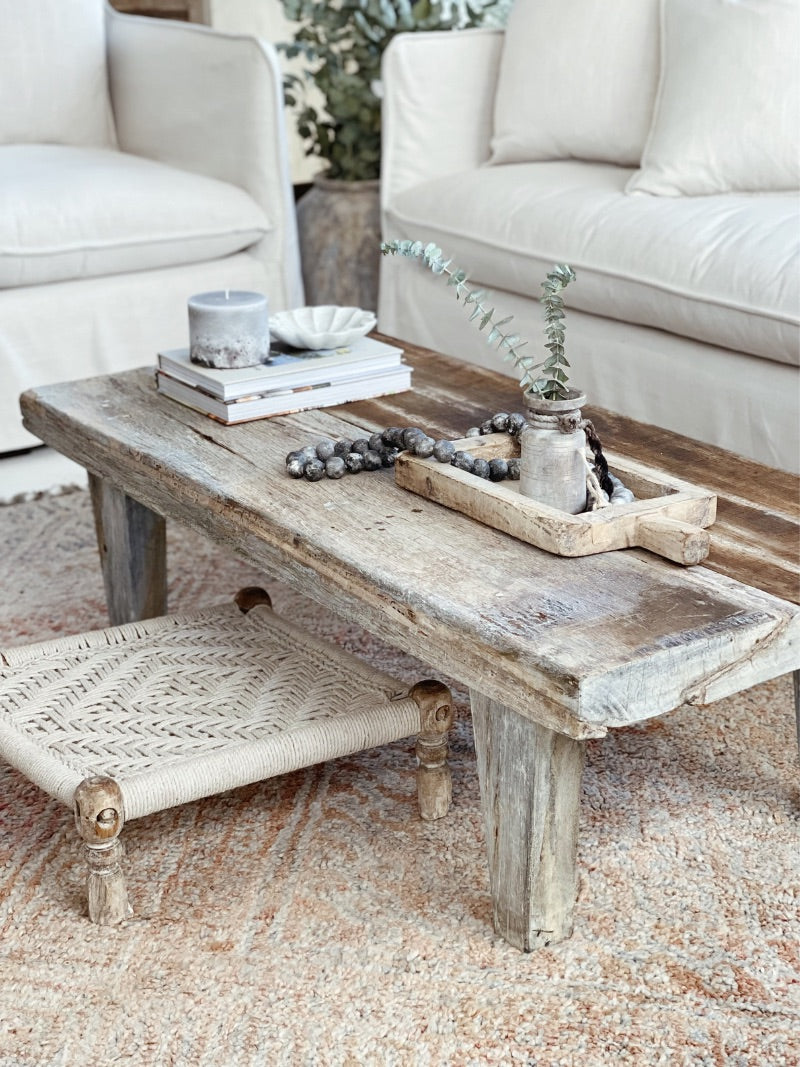In a house decorated using the Wabi-Sabi technique, nothing is perfect. You won’t see sparkling, perfect countertops, shiny new flooring, or decor that looks like it came straight out of a showroom. Instead, you’ll view a kind of shabby chic, only simpler and with a nod to Japanese philosophy, Zen Buddhism, and an embracing of the imperfections in life and everything around you.
Looking to explore the wonder of Wabi-Sabi? Let’s embrace it together.
What is Wabi-Sabi?
The easiest way to describe Wabi-Sabi is with a single phrase “everything ages in a state of grace and beauty.” The concept involves looking at broken things and seeing the beauty and history within them. The old Indian charpoy bed that the legs have now been repurposed into a candle stand and now have a crack isn’t a piece of junk. It has a story to tell; one that’s worthy, beautiful and unique.
Wabi-Sabi has its roots in Zen Buddhism, as well as an early Japanese legend. According to the stories, a monk named Sen no Rikyu decided to shake a cherry tree that had just begun to bloom. As expected, the blossoms fell onto the ground. Rather than get upset at having ruined a beautiful tree, Sen no Rikyu’s master saw the beauty in the fallen blossoms. Thus, the concept of Wabi-Sabi was born.

How Can You Incorporate Wabi-Sabi into Your Home?
As you can imagine, Wabi-Sabi isn’t a completely clear-cut method of interior design. It’s more organic, as it embraces imperfection. If you want to incorporate the design philosophy into your home, here are the steps that you need to follow:
1. Choose Pieces with an Organic Look
The items in your home should have an organic look, and introduce raw, earthy, rustic texture, utilizing natural forms and repurposed materials. Avoid plastics, laminate, shiny and anything that’s too rigid and perfect. Authentic simplicity is the key
2. Embrace Asymmetry
Symmetry is the opposite of the Wabi-Sabi philosophy. There isn’t really anything organic about it, and making things match on either side can present a fussy look that doesn’t really go with the flow. For example, if you’re decorating your sideboard, rather than choose frames, vases, and other things that match, placing them equal distance apart on either side, go for something more unique. Pick pieces that flow together, such as vases with a similar shape but different colours and textures, and arrange them in a more fluid manner. Both sides shouldn’t look the same. It’s all about uniqueness.
3. Make Your Home Look Lived In
Every one of us is different, so different styles and living will appeal to different people. To adopt a Wabi Sabi aesthetic is to bring a more peaceful and authentic sense of being at home. Be more mindful when selecting items for your home by picking items that age with grace, opt for a lived-in and not showroom vibe with an assortment of textured throws and pillows as opposed to a glossy home off the pages of a luxury magazine. You can stimulate other senses apart from sight, candles are a common way to scent your space, books, plants and flowers (fresh or dried) are other common items in the home that can give off a homey feel.

4. Add Some Meaningful Items
Another concept of Wabi-Sabi is the fact that everything in a home is chosen deliberately and that homes are filled with meaningful objects. Have items that evoke emotion, pieces that have a story.
5. Focus on Textures
Choose pieces that have a mixture of textures. A repurposed Indian coffee table, with an old pot from rural china and a linen sofa, can all work in the same room, as long as they have a colour or story in common. While a few items in the room can be flat to bring everything together, it’s important to mix and match textures.
6. Choose Reused and Sustainable Items
Reused and sustainable items fit in with Wabi-Sabi aesthetic. A table made of reclaimed timber, a vintage Moroccan rug and even a vintage Indian console has been repurposed to work in a Wabi-Sabi themed room. Even better, since you’re choosing items that have been repurposed, they’re already not perfect, have a few flaws, and will continue to get better with age. All three of those things are important parts of this design idea and philosophy.
7. Incorporate Earth Tones
The one thing that makes Wabi-Sabi different from the other types of interior design is the colour scheme. A mix of textures, organic items, and bright colours do not scream Wabi-Sabi. Rather than go in that direction, if you want to truly embrace this Japanese philosophy, it’s crucial to choose earth tones instead. For example, a palette of light greys, beiges, or muted shades of green will give you the kind of flow that you want.
Excited to turn your home into a functional Wabi-Sabi abode of wonder? Simply incorporate some of these key concepts, and you’re sure to find that unique chic feel you’ve been looking to unlock.
Explore our range of One Of A Kind Furniture HERE.



Leave a comment